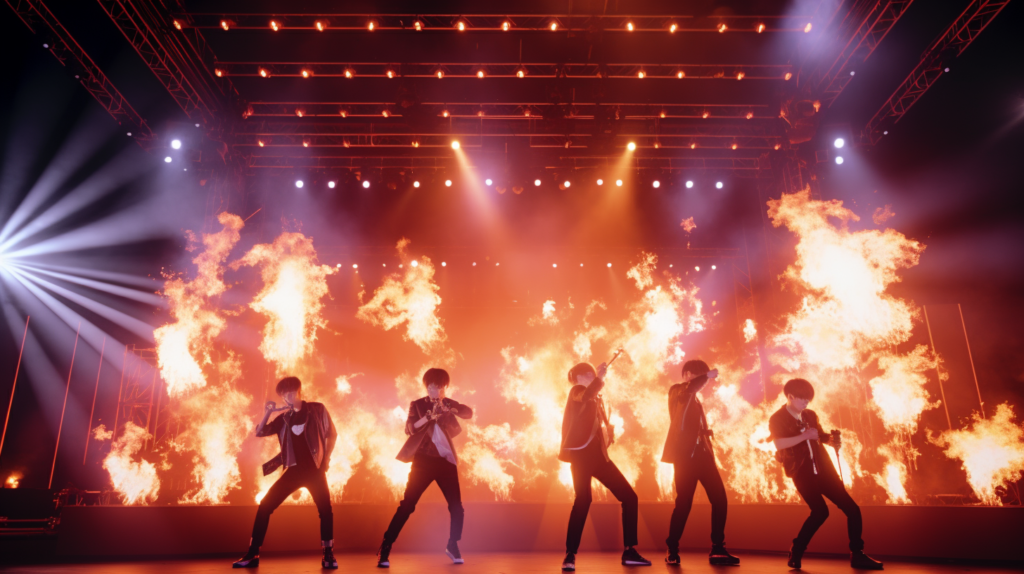
K-Pop, renowned for its vibrant energy and eclectic mix of genres, has transformed the global music scene. For advanced producers, creating K-Pop type beats offers a unique challenge and opportunity to blend diverse musical elements into cohesive, compelling tracks. In this deep dive, we’ll explore sophisticated techniques and practical tips to master the art of K-Pop type beat production.
Understanding K-Pop’s Musical Structure
K-Pop’s Dynamic Composition:
- Study Popular Tracks: Begin by dissecting chart-topping K-Pop songs. Notice the frequent use of the ABABCB structure (Verse-Chorus-Verse-Chorus-Bridge-Chorus), but don’t be confined by it. K-Pop often breaks conventional Western song structures, offering surprising musical turns.
- Blend of Influences: K-Pop is a fusion of various genres. You’ll find traces of EDM, hip-hop, R&B, and traditional Korean music. Understanding these genres and their typical structures will give you a solid foundation for creating a K-Pop beat.
Practical Exercise: Analyze a K-Pop track and map out its structure. Identify elements from different genres and note how they are integrated. This exercise will enhance your ability to create diverse yet cohesive compositions.
Essential Elements of a K-Pop Beat
Incorporating Distinctive Sounds:
- Synthesis: K-Pop beats often feature lush, vibrant synth sounds. Use advanced synthesis techniques like wavetable and FM synthesis to create unique textures. Experiment with layering synths to achieve a fuller sound.
- Traditional Instruments: Incorporating traditional Korean instruments can give your beat an authentic K-Pop feel. Use high-quality samples or virtual instruments to add instruments like the gayageum or piri.
- Digital Elements: Do not hesitate to use digital and electronic sounds, like 8-bit chiptune elements, to add a playful vibe.
Practical Tip: Spend time creating custom synth patches. These unique sounds will set your K-Pop beats apart from generic productions.
Crafting Dynamic Rhythms and Grooves
Developing Engaging Drum Patterns:
- Complex Rhythms: K-Pop drums are not just about keeping time; they add character to the track. Use complex rhythms and change up your drum patterns frequently throughout the song to maintain listener interest.
- Groove and Swing: Play with groove and swing settings in your DAW. This will make your rhythms feel more human and less robotic, which is crucial in K-Pop’s energetic dance tracks.
- Layering and Sampling: Layer multiple drum samples to create a unique sound. Don’t be afraid to mix traditional drum sounds with electronic or unconventional samples for a fresh approach.
Actionable Exercise: Create a drum loop inspired by a K-Pop song you admire. Focus on layering different samples and adjusting groove settings to replicate the track’s energetic feel.
Melodic Composition and Harmony
Innovative Melody Writing:
- Catchy Hooks: K-Pop is renowned for its memorable hooks. Use synth leads, vocal chops, or any distinctive sound to create a catchy melody line. Experiment with different modes and scales like the harmonic minor or pentatonic scales for unique melodies.
- Chord Progressions: Unlike typical pop songs, K-Pop often utilizes complex chord progressions. Experiment with extended chords (7ths, 9ths), modulations, and key changes to add richness and unpredictability to your tracks.
- Counter-Melodies: To add depth, layer your main melody with counter-melodies. This can be done using different instruments or synthesizers, ensuring they complement rather than overpower the main melody.
Actionable Strategy: Write a hook that stands out. Use a unique synth sound or vocal sample and build your track around it. Pay special attention to how your melody interacts with the chord progression.
Advanced Sound Design for K-Pop Beats
Layering and Texture Creation:
- Layering for Fullness: Combine different sounds to create a rich and full texture. For example, layer a bright synth lead with a warm pad to add depth. Use panning and EQ to ensure each layer has its own space in the mix.
- Creative Use of Effects: Don’t shy away from using effects like reverb, delay, or modulation effects creatively. Automate these effects throughout your track to add movement and interest.
- Experimental Sounds: K-Pop often incorporates unexpected sound elements. Experiment with non-musical sounds, like nature sounds or city noises, to add a unique flair to your beats.
Practical Tip: Spend a session designing new sounds. Record various objects and manipulate these recordings with effects to create unique samples for your K-Pop production.
Vocal Production and Processing in K-Pop
Refining Vocals:
- Vocal Comping: K-Pop vocals are often polished and emotive. Practice vocal comping by selecting the best parts from multiple takes to create a perfect vocal line.
- Creative Effects: Use effects like autotune, vocoders, or harmonizers not just for correction, but creatively to add a unique character to the vocals.
- Backing Vocals: Layering backing vocals is crucial in K-Pop. Use harmonies, octaves, and even counter-melodies in your backing vocals to enrich the vocal arrangement.
Actionable Exercise: Take a vocal sample and process it with various effects. Try creating a harmony line using a vocoder or add a rhythmic element with a gated reverb.
Mixing and Mastering K-Pop Beats
Advanced Mixing Techniques:
- Spatial Mixing: K-Pop tracks often have many elements competing for space. Use advanced panning and stereo imaging techniques to create a wide, enveloping mix. Automate panning on certain elements to enhance dynamism.
- EQ and Compression: Apply surgical EQ to carve out space for each element. Compression should be used both for controlling dynamics and adding punch, particularly on drums and bass. Sidechain compression can be particularly effective in making space for the kick.
- Vocal Mixing: Vocals are the centerpiece of K-Pop. Use subtle EQ to enhance clarity, dynamic EQ or multiband compression to control sibilance, and reverb/delay sends to place the vocal in the mix without muddying it.
Practical Tip: Create a custom mixing template for K-Pop tracks. This should include predefined busses for drums, instruments, vocals, and effects, each with basic processing chains that you can adjust for each track.
Mastering for Streaming Platforms:
- Loudness and Dynamics: K-Pop tracks need to be competitively loud yet dynamic. Aim for a loudness level appropriate for streaming platforms (like -14 LUFS). Use a limiter to achieve loudness without sacrificing dynamics.
- Stereo Widening: Use a stereo widening tool to enhance the sense of space in your track. Be cautious not to overdo it, as this can cause phase issues.
- Quality Control: Check your master on different listening systems to ensure it translates well across platforms. Pay attention to the low-end and high frequencies, as these can vary greatly between systems.
Actionable Strategy: Master a K-Pop track, keeping streaming platform standards in mind. Regularly reference commercial tracks to ensure your master holds up in terms of loudness and clarity.
Let’s see what you build using these tips !




